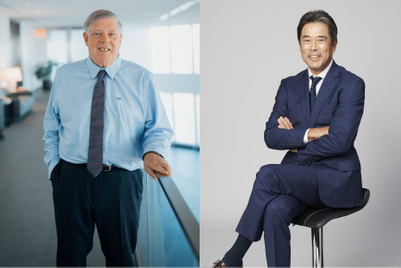
Stagwell Global had a strong start to its second year post-merger with MDC Partners, leading it to raise its full-year growth forecast for 2022 to between 10% and 12%.
Revenue grew 254.7% year over year to $642.9 million, with organic net revenue up 23.6% in the quarter.
On an investor call on Friday (May 6), Stagwell CEO Mark Penn said that growth was driven by digital transformation services, which increased 9% year over year, as well as consumer insights and strategy, up 56% year over year.
Penn highlighted growth in media as well, as Stagwell now has the scale to go after global accounts spending “hundreds of millions of dollars on media buys.” Stagwell merged Assembly and ForwardPMX in September, creating a full-service media offering with $5 billion in negotiating leverage. The agency won Lenovo’s multimillion-dollar media account in April.
“A lot of media is out for bid these days,” Penn told investors. “People are saying, ‘I used to do mostly conventional media, now I’ve shifted. I’ve got to reconsider the team.’ We’re already 75% online placement, and that positions us extremely well for clients looking to shift their media placements.”
Stagwell is also investing in new areas as it expands its global footprint. The company acquired Poland-based e-commerce agency Brand New Galaxy in April after purchasing Canada-based multicultural firm Dyversity Communications earlier that month, shoring up capabilities in two important areas.
Stagwell’s creative and communications agencies grew 9% year over year, driven by double-digit growth in PR and strength at Anomaly, which snagged Dunkin’s creative AOR account in November.
Penn caught up with Campaign US after the earnings call.
Campaign US: You seem to see a lot of potential in the media business, where there have been a lot of large, global accounts up for bid. Do you see that as a major growth driver for Stagwell moving forward?
Mark Penn: One of the biggest changes is the full combination of our offering. We’ve merged Forward PMX in with Assembly, so it’s now Assembly — a several thousand person, global, online and offline marketing and media company. Gale has also developed as a creative media consultancy and there are a couple of other smaller companies within influencer and B2B.
That allows us to go out with a full suite of scaled media offerings and has opened up a wholly different level of contract. There is a big healthcare company [win] that hasn’t been announced. You’ve seen the H&R Block [win] over at Gale. These [Q1] numbers don’t reflect the Lenovo win, which is several hundred millions of dollars in media.
Gale seems to have a lot of momentum. What is it doing that’s standing out to clients?
It’s evolved very strongly over the last two years from an agency that was primarily focused on CRM to an agency now that has excellent creative offerings combined with being able to [help] clients with first-party data and create a marketing flywheel. It’s not doing “the media” — it’s the full campaign, including media.
We’re seeing a recombination of creative and media after years of procurement having separated them out. In digital, that makes no sense. You need to get the right ad to the right person at the right time, and that requires a level of synchronization.
Where are you seeing strength in the creative agencies? To what extent is growth there being fueled by digital services?
We’ve made sure each creative agency can partner with a digital company. We’re in the process of making sure each network has a full tech stack of media offerings, so they can combine creativity with more direct media placement, particularly digital, so they’ll be able to duplicate this formula of the very close connection between creativity, data and media.
Stagwell talks a lot about gaining share from the legacy holding companies. Is that your primary competitive set, or do you see yourself up against more modern firms?
[Our] digital transformation companies will typically compete against engineering-oriented companies that might not have the consumer experience piece. But for some of the larger media and other accounts, we’re absolutely competing against legacy companies and offering an alternative. We’ve positioned ourselves as the challenger company, but we’re getting to the scale now where we are able to take share from them and have an outsized growth rate.
Clients are spending on advertising and marketing despite high inflation and global uncertainty. What’s behind this?
It’s a new marketing environment. They were busy figuring out what to do during the pandemic. Now, they are figuring out how to recalibrate marketing for new products like EVs and the comeback of travel. Then they’re saying, however we did it before the pandemic, we need to do it on a digital basis now.
I also wouldn’t overlook the growth we’re seeing in research. As people come out of the pandemic, [marketers] need to know how consumers are thinking, acting and changing. We’ve picked up a lot of demand there.
How has the talent crunch impacted Stagwell?
We’ve added about 1,000 people in the last eight months. It is a competitive marketplace out there, there’s no question about it. We’re a company that’s growing and on the way up.
We structured the brands so that if you really understand research, you’re not in a generalized agency. You’re at a specialist firm where people get to develop their expertise.
But it’s no question that it’s a competitive market out there. We’ve combined the ability to own our stock as well as compensation into what we hope will be an attractive offering.
Are you seeing a lot of salary pressure?
Medium. It’s more about a competition for talent and an adjustment to the working environments people are looking for than it is just salary pressure.




.jpg&h=334&w=500&q=100&v=20250320&c=1)
.jpg&h=334&w=500&q=100&v=20250320&c=1)
.jpg&h=334&w=500&q=100&v=20250320&c=1)
.jpg&h=334&w=500&q=100&v=20250320&c=1)

.jpg&h=334&w=500&q=100&v=20250320&c=1)



.jpg&h=268&w=401&q=100&v=20250320&c=1)
.jpg&h=268&w=401&q=100&v=20250320&c=1)



.jpg&h=268&w=401&q=100&v=20250320&c=1)
.jpg&h=268&w=401&q=100&v=20250320&c=1)